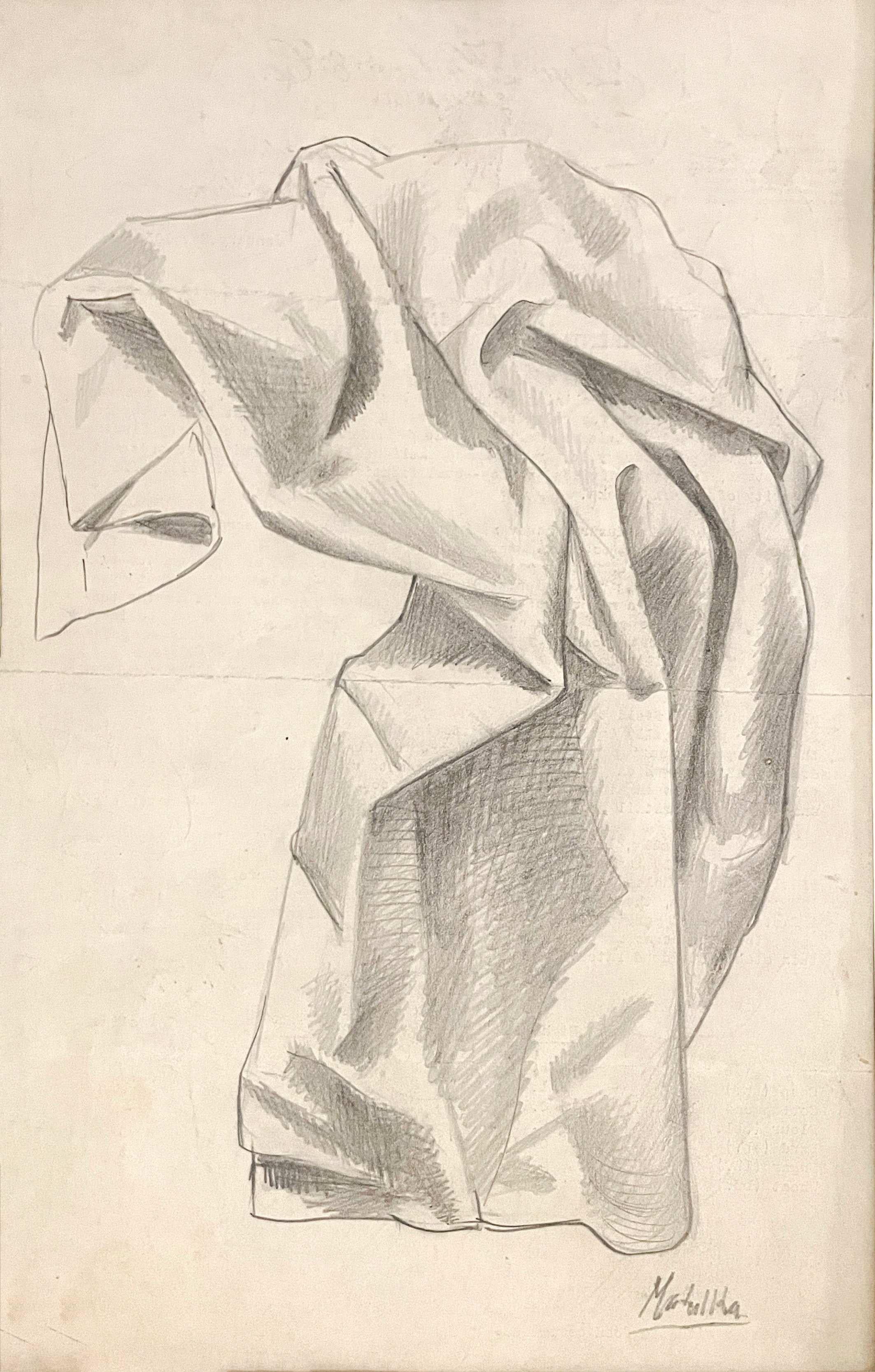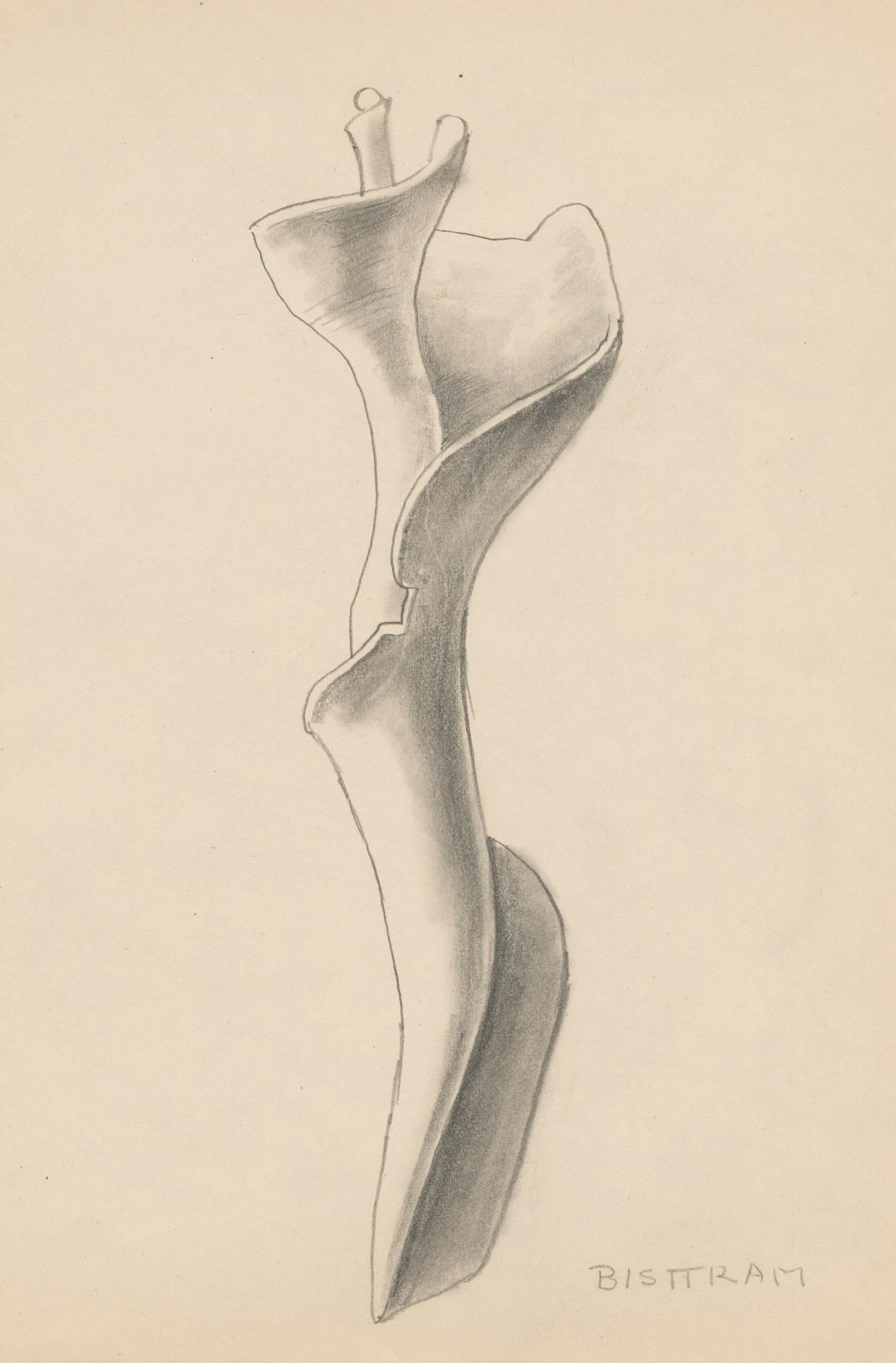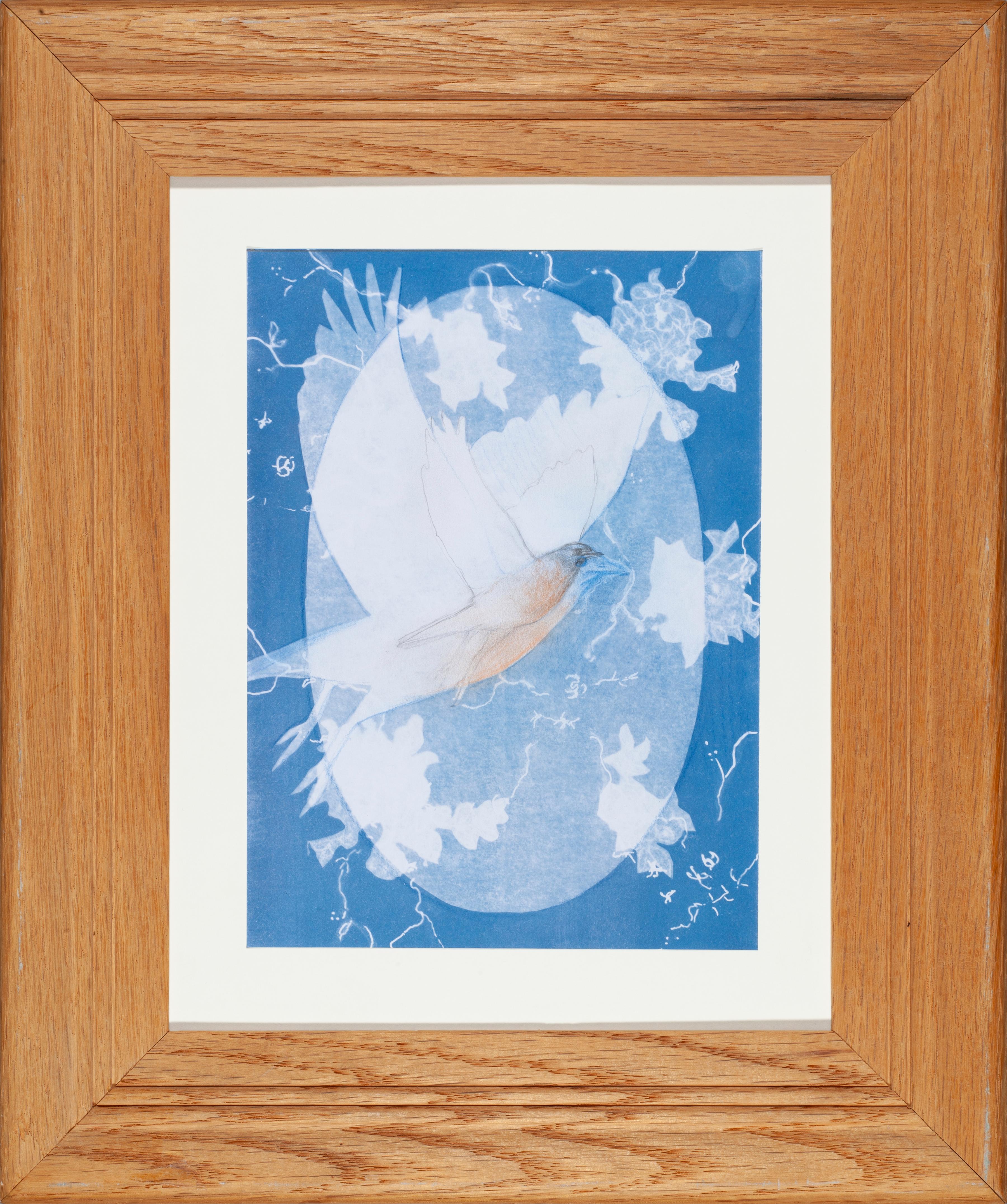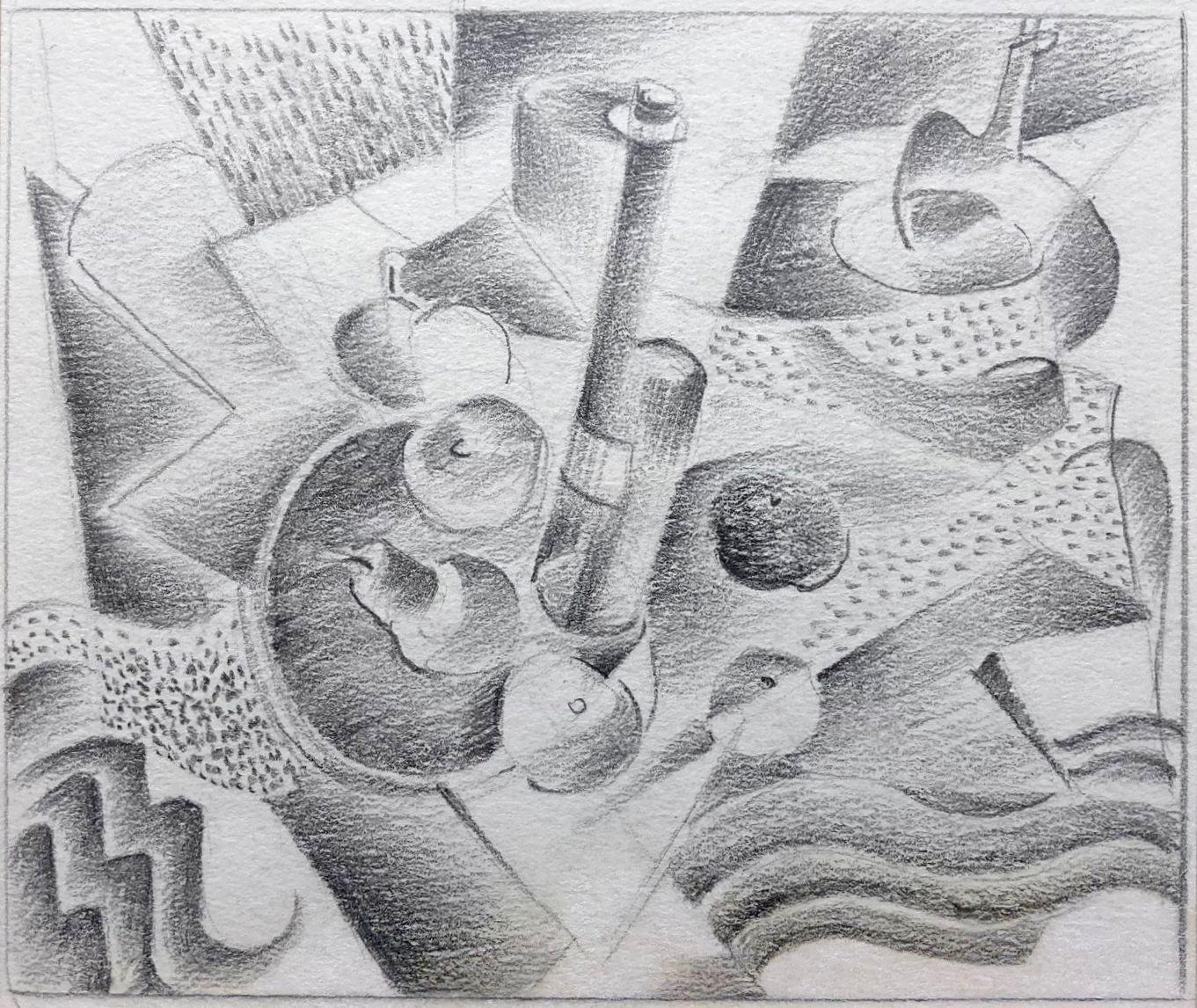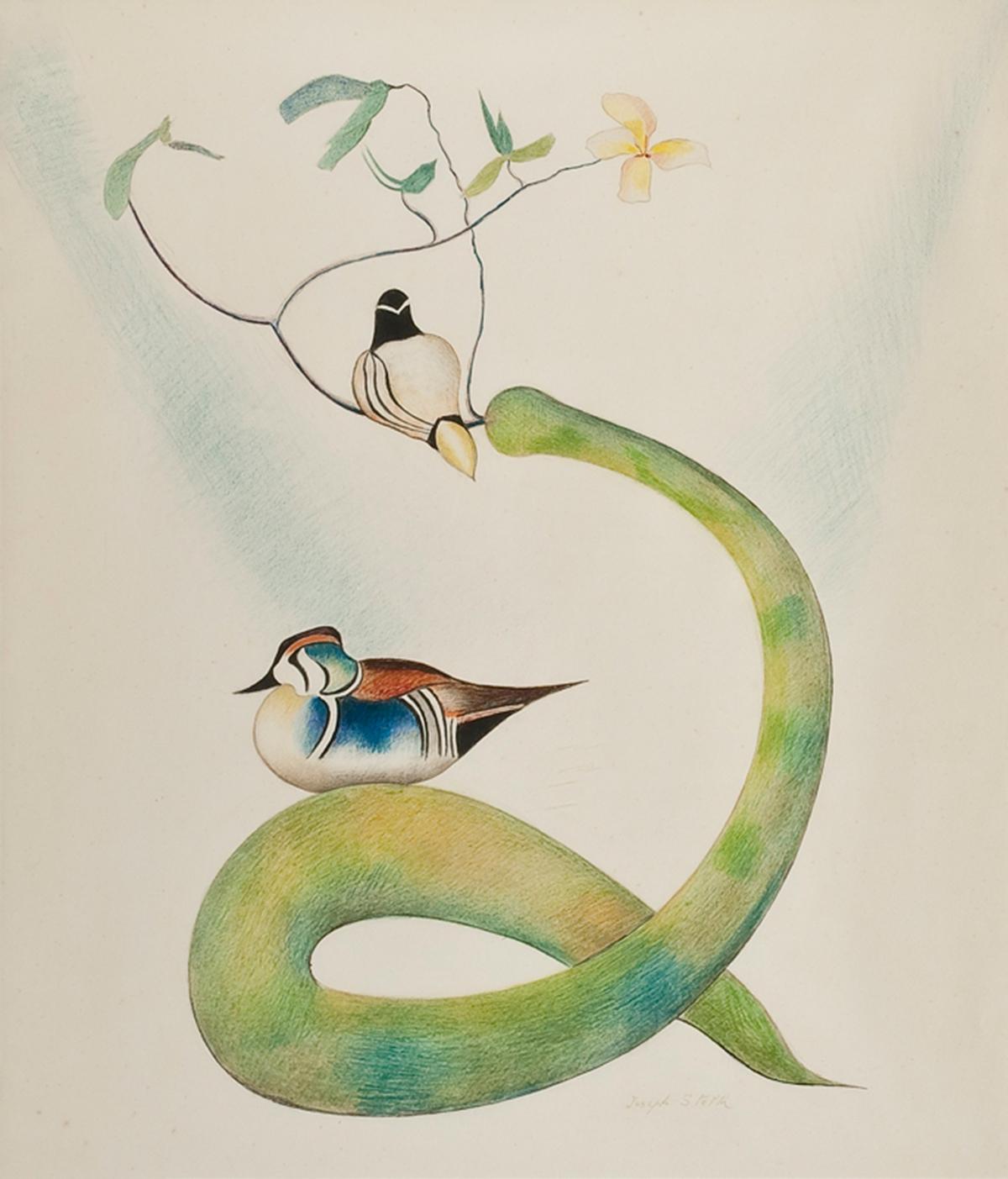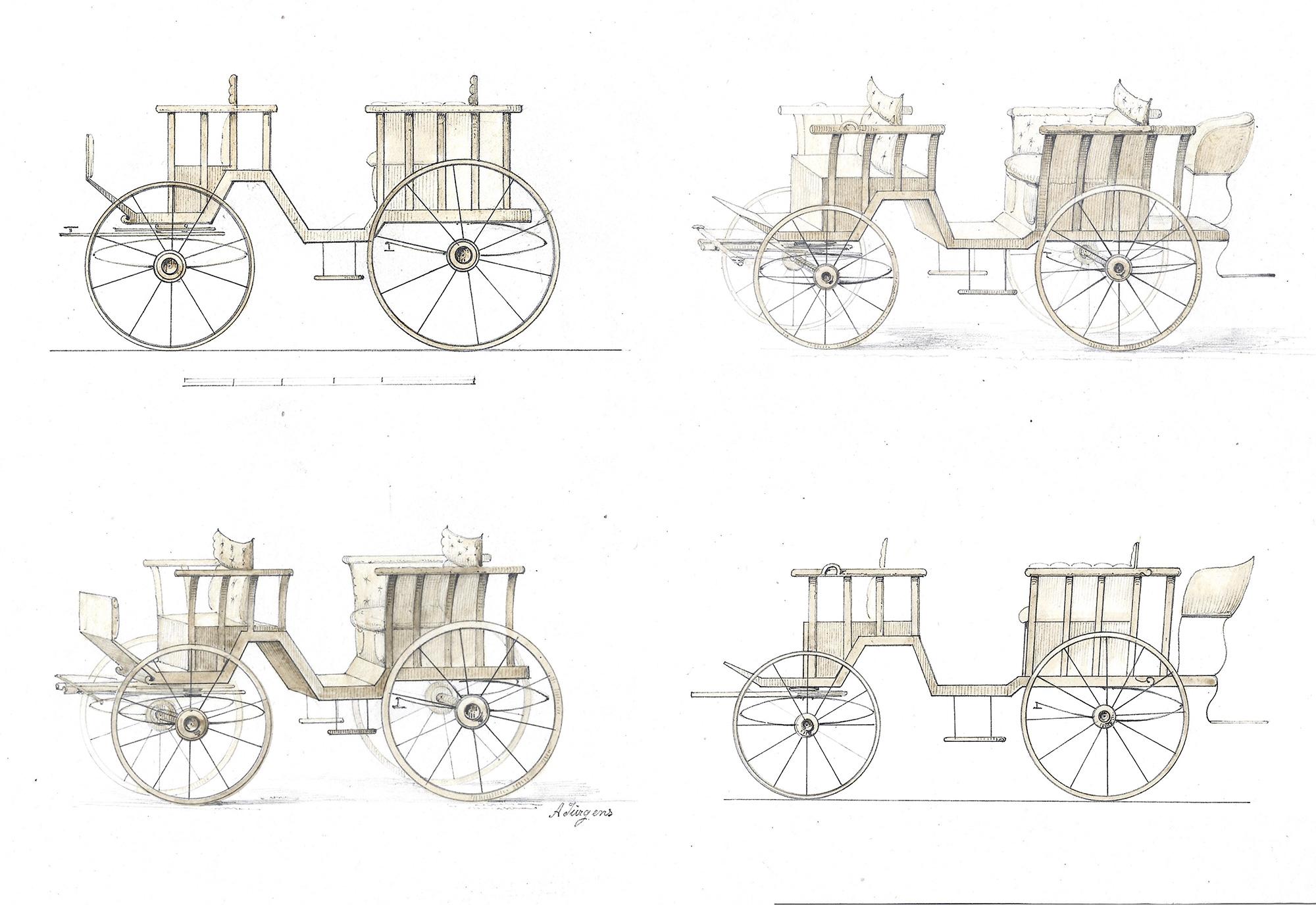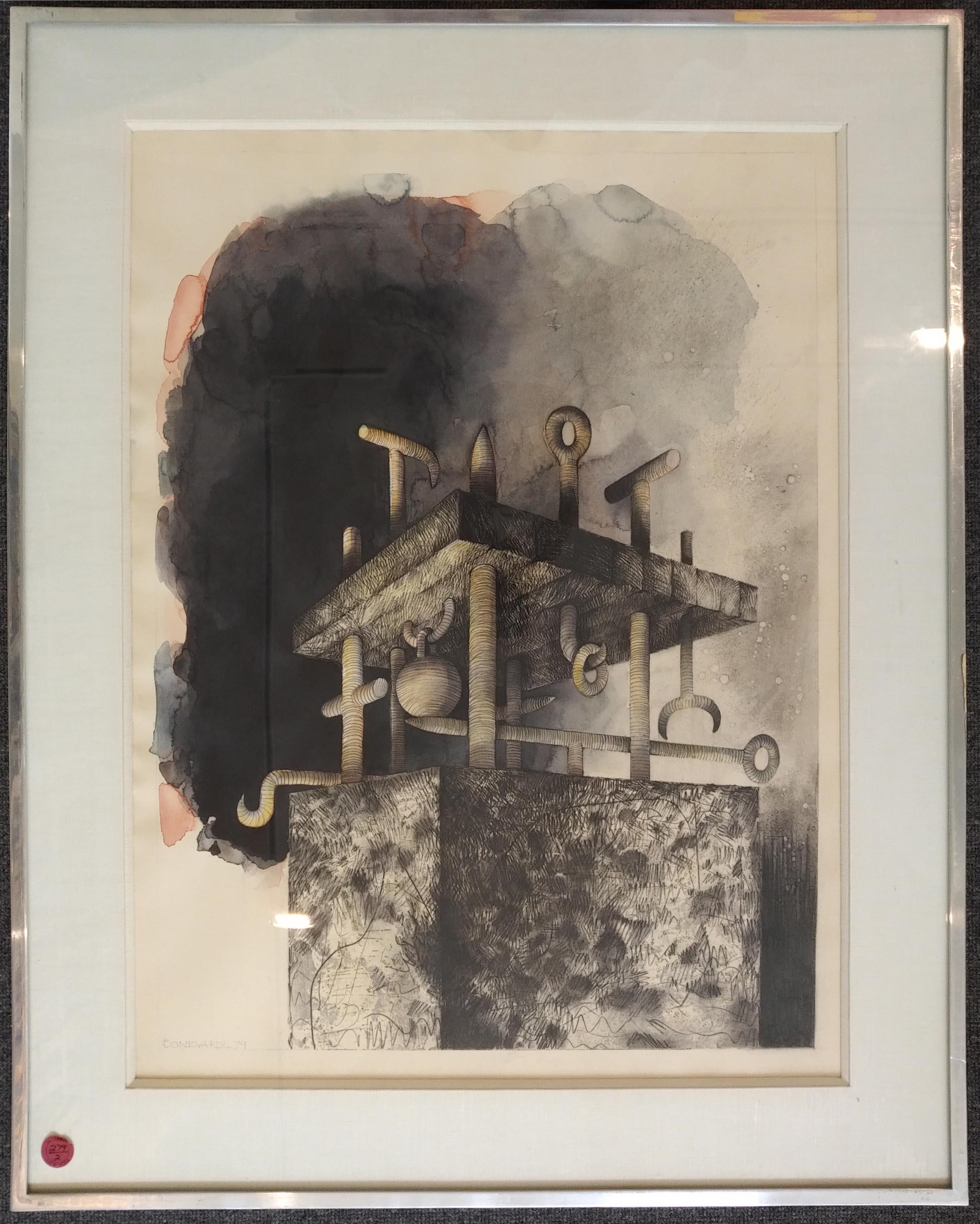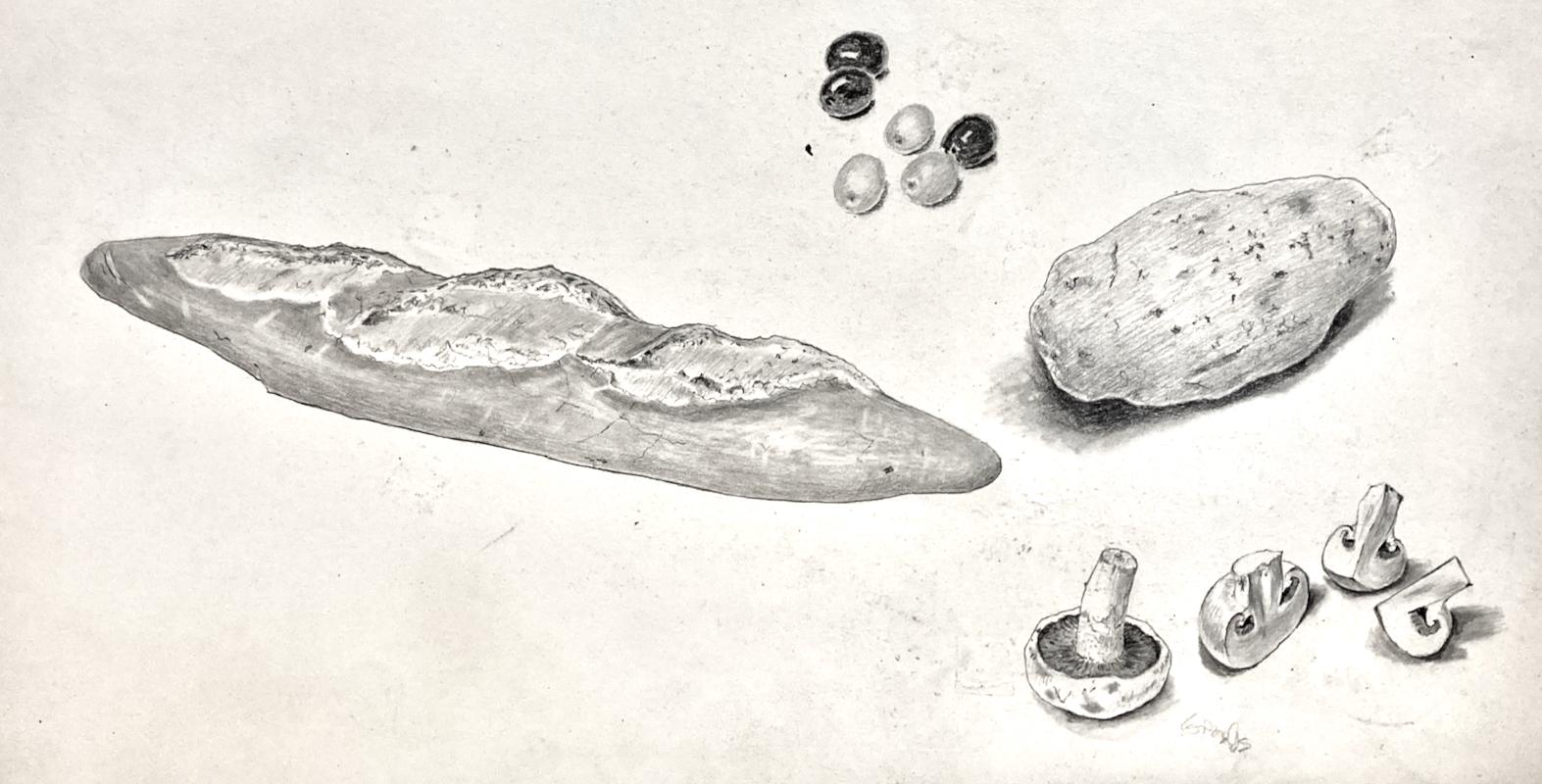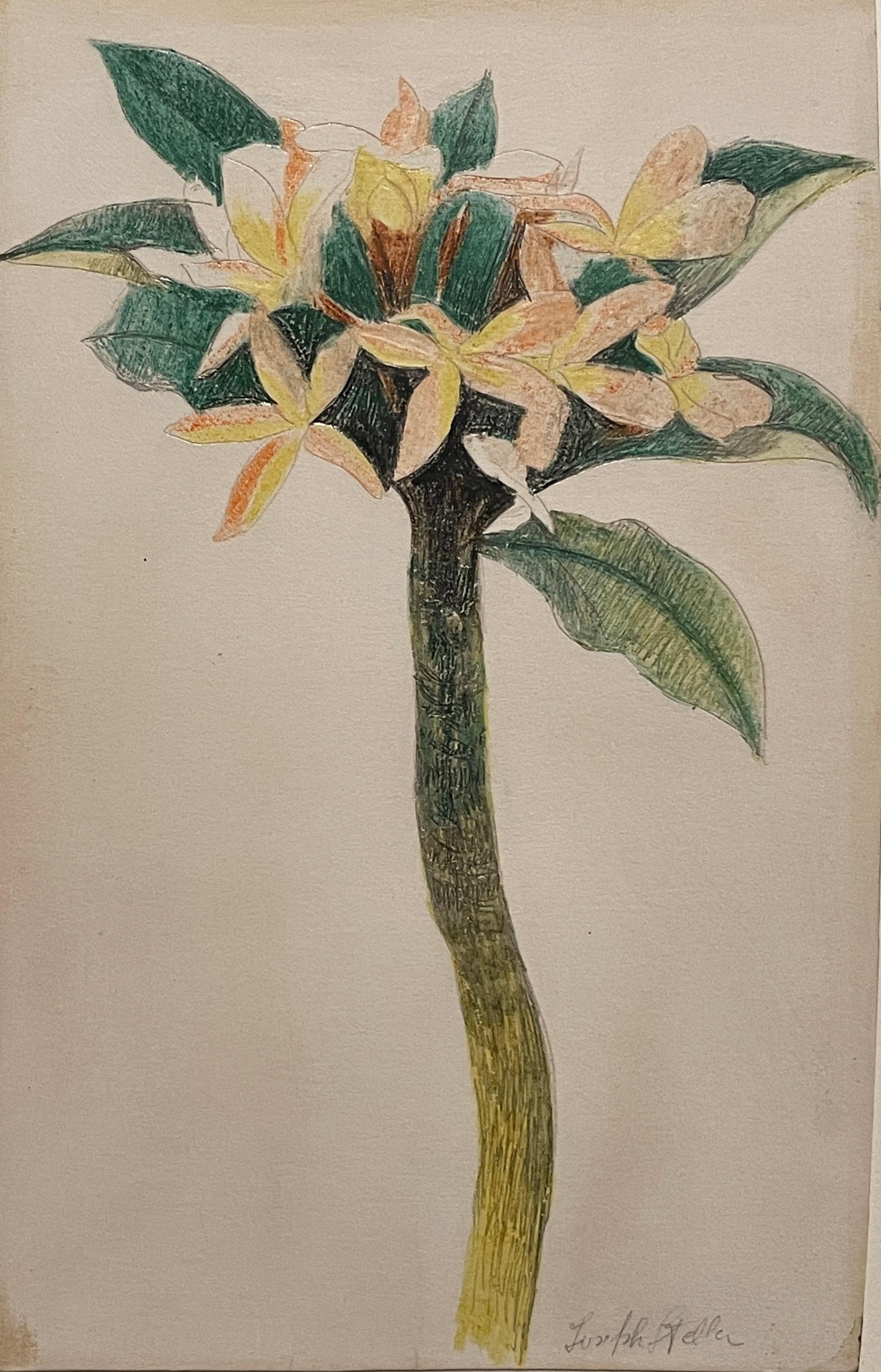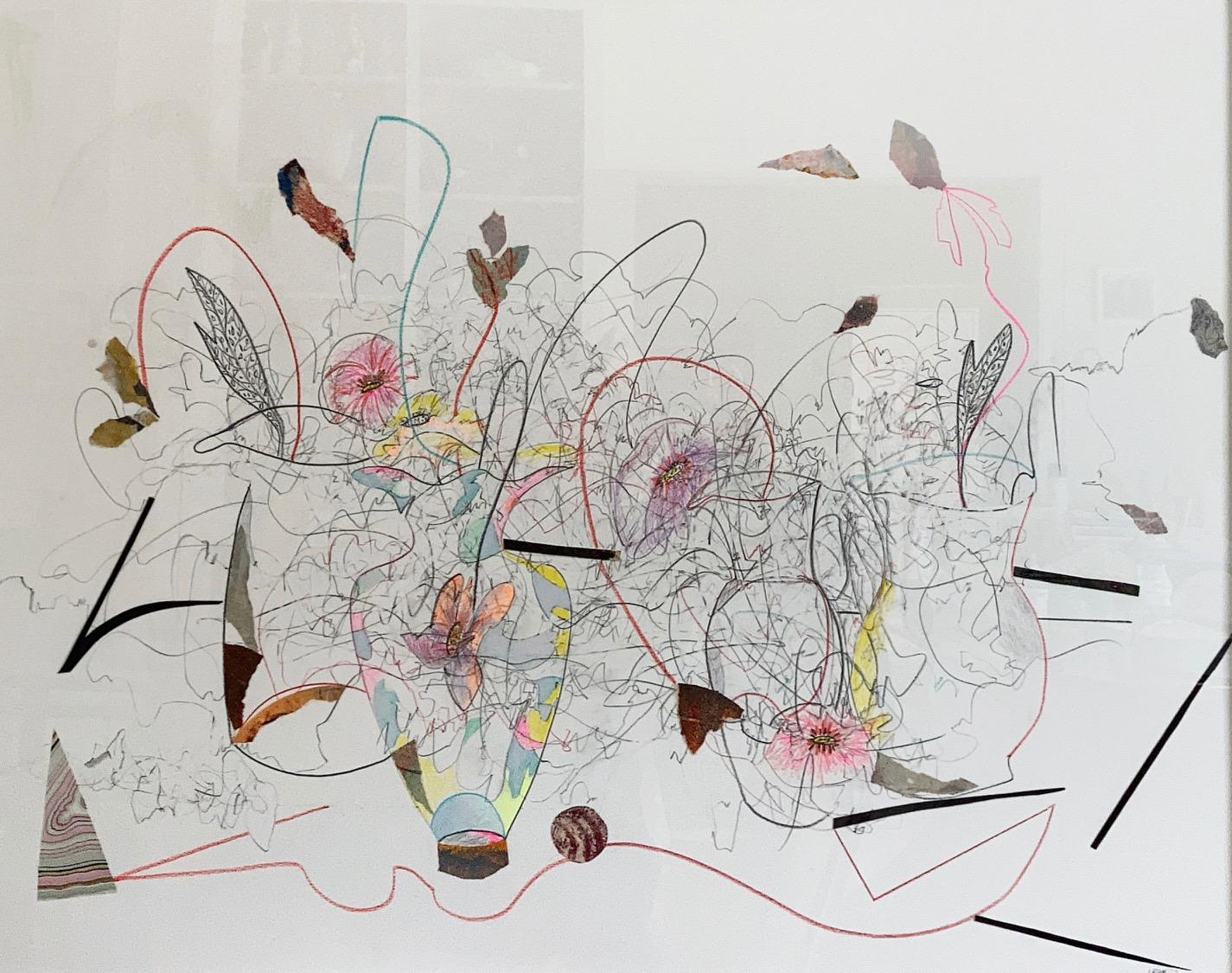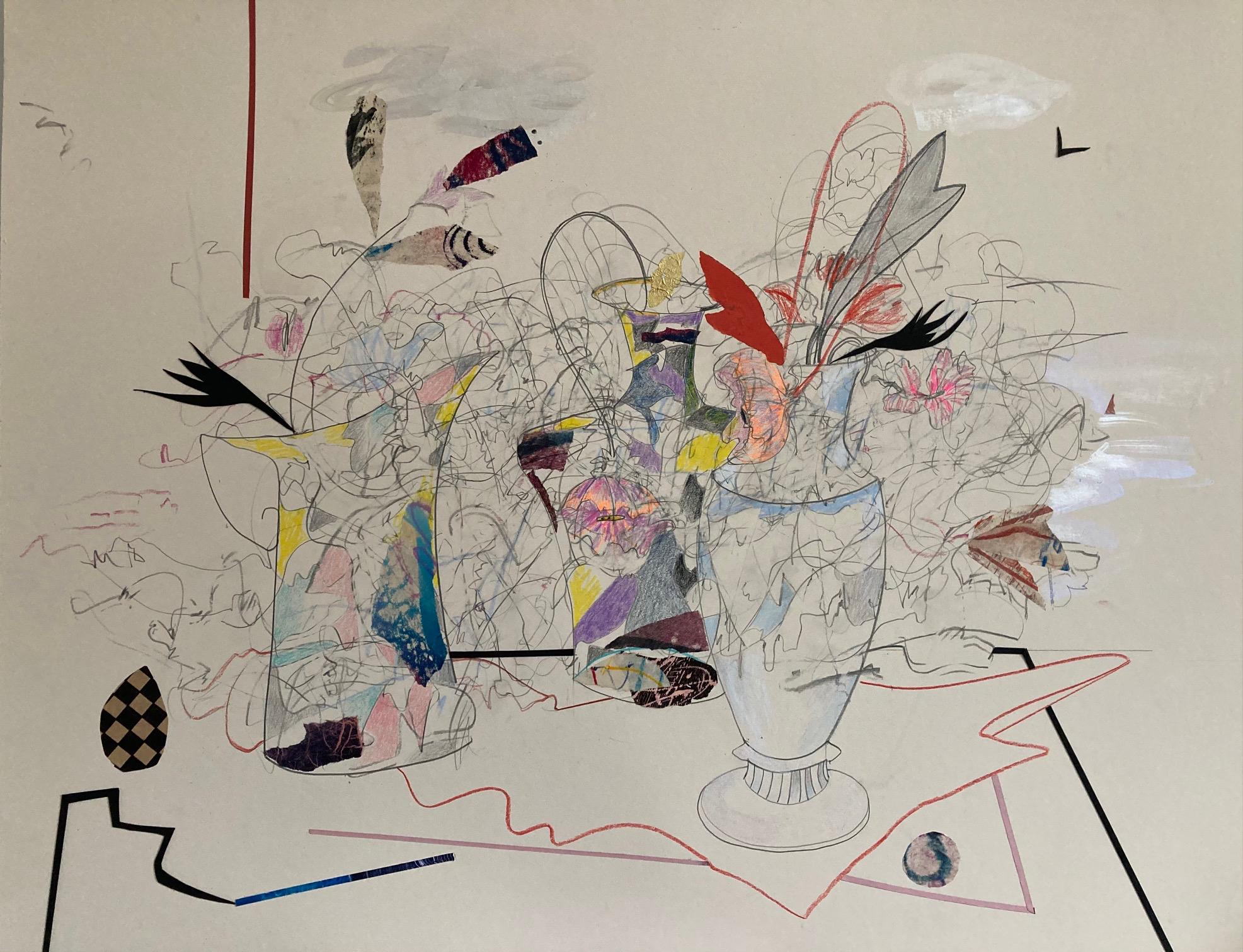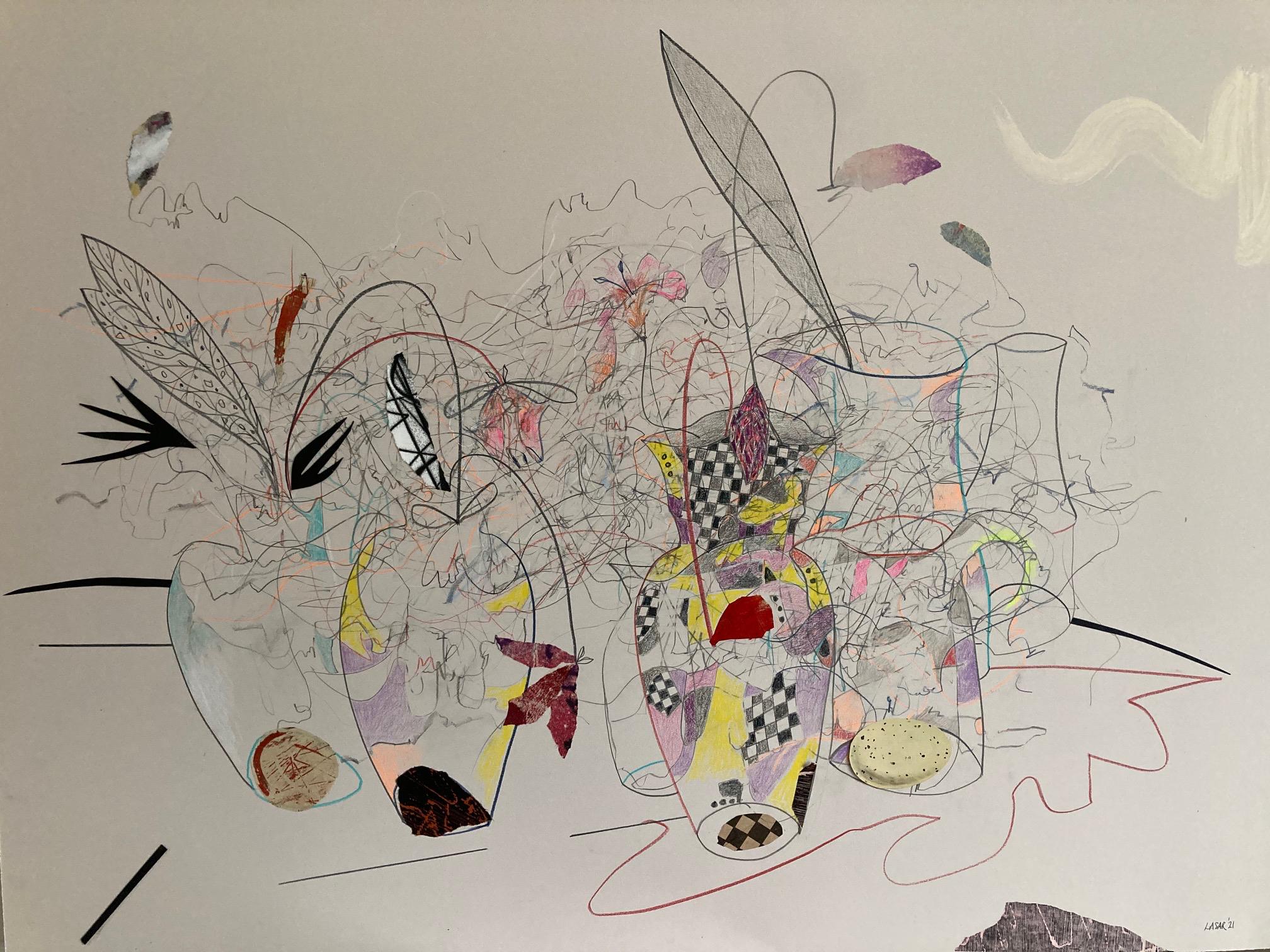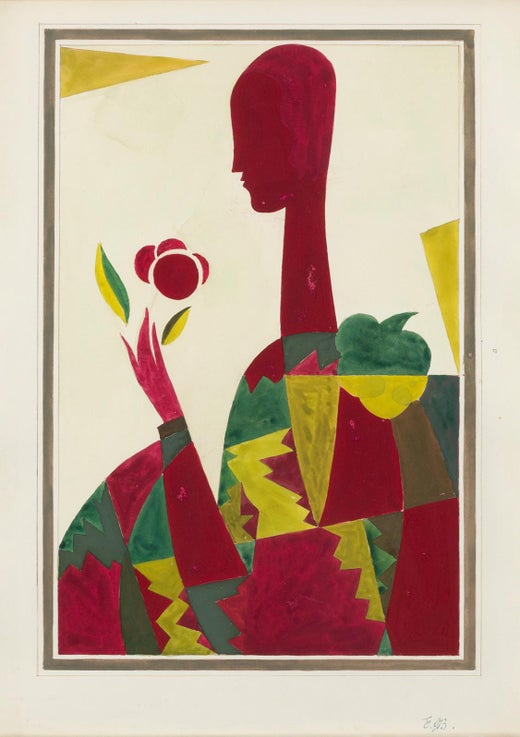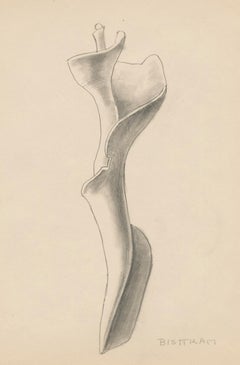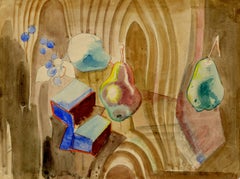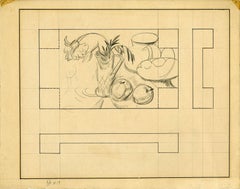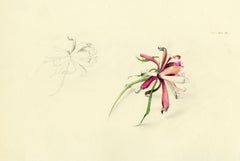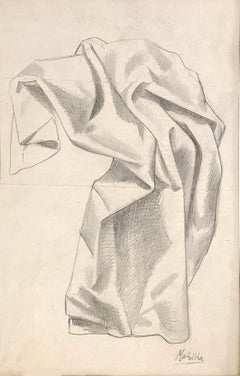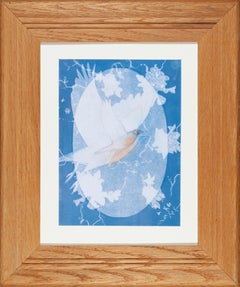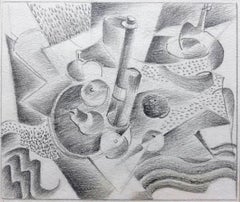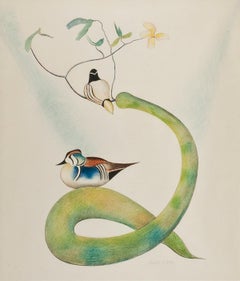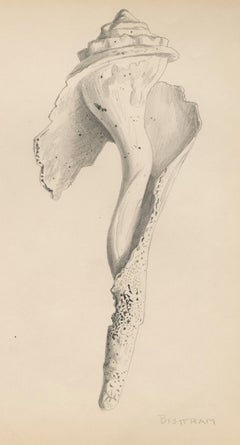
Untitled, Still Life of Shell
View Similar Items
Want more images or videos?
Request additional images or videos from the seller
1 of 5
Emil BisttramUntitled, Still Life of Shell1945-1951
1945-1951
About the Item
- Creator:Emil Bisttram (1895 - 1976, American, Hungarian)
- Creation Year:1945-1951
- Dimensions:Height: 9.63 in (24.47 cm)Width: 7.5 in (19.05 cm)
- Medium:
- Movement & Style:
- Period:
- Condition:
- Gallery Location:Fairlawn, OH
- Reference Number:Seller: FA125111stDibs: LU14012781712
Emil James Bisttram Born Hungary, 1895
Died New Mexico, 1976 Emil Bisttram was born in Hungary in 1895 and emigrated with his parents when he was eleven to America. Bisttram choose a more economically promising career in commercial art design due to his economic conditions. Bisttram opened his own art agency at the young age of twenty and during this time took classes with Leon Kroll at the Art Student League and with Jay Hambidge, an advocate of Dynamic Symmetry, at the New York School of Fine and Applied Art (renamed the Parsons School of Design). Dynamic Symmetry is a system of spacial balances and had a lifelong impact on Bisttram. Bisttram taught at Parsons from 1920 to 1925 and at the New York Master Institute of United Arts at the Roerich Museum from 1925-1930. The Institute was a spiritual inspiration to Bisttram because it advocated linking the fine arts together. His style of painting however was more influenced by Kandinsky and he began to experiment in non-objective art. Bisttram received many awards including a Guggenheim fellowship in 1931 to study mural painting. However, he decided to go to Mexico study with the great Mexican Muralist Diego Rivera. After returning from Mexico, Bisttram participated in an exhibition at the Whitney Museum for Guggenheim fellows in 1933 and received a commission to create a mural for the Taos, New Mexico courthouse. The Taos School of Art (renamed Bisttram School of Fine Art) which explored spiritualism and meditation was opened by Bisttram in 1932 where he taught some famous painters including Florence Miller Pierce. Together with Raymond Jonson and Lauren Harris, the Transcendental Painting Group was formed in Santa Fe, New Mexico from 1938-1942. This group was considered very radical for the time and the community reacted with much disdain. Bisttram continued to teach and paint and it is thought that Bisttram’s art truly represents transcendental ideas.
About the Seller
5.0
Recognized Seller
These prestigious sellers are industry leaders and represent the highest echelon for item quality and design.
Platinum Seller
Premium sellers with a 4.7+ rating and 24-hour response times
Established in 1978
1stDibs seller since 2013
787 sales on 1stDibs
Associations
International Fine Print Dealers Association
Authenticity Guarantee
In the unlikely event there’s an issue with an item’s authenticity, contact us within 1 year for a full refund. DetailsMoney-Back Guarantee
If your item is not as described, is damaged in transit, or does not arrive, contact us within 7 days for a full refund. Details24-Hour Cancellation
You have a 24-hour grace period in which to reconsider your purchase, with no questions asked.Vetted Professional Sellers
Our world-class sellers must adhere to strict standards for service and quality, maintaining the integrity of our listings.Price-Match Guarantee
If you find that a seller listed the same item for a lower price elsewhere, we’ll match it.Trusted Global Delivery
Our best-in-class carrier network provides specialized shipping options worldwide, including custom delivery.More From This Seller
View AllUntitled, Still Life of Shell
Located in Fairlawn, OH
Untitled, Still Life of Shell
Graphite on paper, 1945-1951
Signed lower right in pencil "Bisttram" (see photo)
Condition: Excellent
Sheet size: 9.63 x 7 .5 inches
EMIL BISTTRAM (189...
Category
1940s American Modern Still-life Drawings and Watercolors
Materials
Graphite
Still Life with Tromp L'Oeil
By William Sommer
Located in Fairlawn, OH
Still Life with Tromp L'Oeil
Graphite and watercolor on a book page.
Signed in ink by the artist lower right corner
(see photo)
Provenance:
Estate of the artist (Estate No. 00916 verso)
Ray Sommer (the artist's son)
Joseph M. Erdelac (No. 18 JME verso)
Book page verso is an illustration of a Durer woodcut...
Category
1920s American Modern Still-life Drawings and Watercolors
Materials
Watercolor
untitled (Still Life with Apples and Vase of Flowers)
By William Sommer
Located in Fairlawn, OH
[recto];untitled (Sketches for Still
Unsigned
9 1/2 x 12 inches (24.2 x 30.6 cm.)
Category
20th Century Still-life Drawings and Watercolors
Materials
Graphite
Flower Studies
By Mary Spain
Located in Fairlawn, OH
Unsigned
Graphite and colored pencils on laid paper
Category
Mid-20th Century Surrealist Still-life Drawings and Watercolors
Materials
Color Pencil, Graphite
Untitled (cacti)
By Peter Marks
Located in Fairlawn, OH
Provenance:
Estate of the Artist
Peter Marks (1935 -2010)
Peter Marks was born in New York City on January 18, 1935. A lifetime New Yorker, Marks gradu...
Category
Early 2000s Abstract Geometric Still-life Drawings and Watercolors
Materials
Graphite
Surrealist landscape with skull and red daisy
By Charles Harris ( Beni Kosh )
Located in Fairlawn, OH
Surrealist landscape with skull and red daisy
Watercolor on paper, 1960-1970
Unsigned
Stamped with the artist's estate stamp verso (see photo)
Provenance: Estate of the artist
Refere...
Category
20th Century Surrealist Still-life Drawings and Watercolors
Materials
Watercolor
You May Also Like
A ca. 1938 Graphite on Paper Study of Classical Drapery by Modernist Jan Matulka
By Jan Matulka
Located in Chicago, IL
A ca. 1938 graphite on paper, study of a classical drapery by notable Modernist artist Jan Matulka. The image is drawn on the back of a typewritten, folded sheet of stationery, from...
Category
1930s American Modern Still-life Drawings and Watercolors
Materials
Paper, Graphite
Eastern Bluebird
Located in Columbia, MO
Hannah Reeves
Eastern Bluebird
2024
13 x 11 framed
Category
21st Century and Contemporary American Modern Animal Drawings and Waterc...
Materials
Graphite, Photographic Paper, Acrylic
Ca. 1945 Cubist Graphite on Paper Still Life Drawing by Artist Stanley Bielecky
By Stanley Bielecky
Located in Chicago, IL
A ca. 1945, Cubist black & white graphite drawing of fruit by artist Illinois and Michigan artist Stanley Bielecky. Image size: 4" x 5". Archivally matted to: 13 1/4" x 16".
Stanley Bielecky was an Indiana artist who painted the American scene, from the factories and workers around East Chicago to the bucolic settings of Mackinac Island...
Category
1940s American Modern Drawings and Watercolor Paintings
Materials
Graphite, Paper
Two Wood Ducks on a Flowering Branch
By Joseph Stella
Located in New York, NY
Joseph Stella was a visionary artist who painted what he saw, an idiosyncratic and individual experience of his time and place. Stella arrived in New York in 1896, part of a wave of Italian immigrants from poverty-stricken Southern Italy. But Stella was not a child of poverty. His father was a notary and respected citizen in Muro Locano, a small town in the southern Appenines. The five Stella brothers were all properly educated in Naples. Stella’s older brother, Antonio, was the first of the family to come to America. Antonio Stella trained as a physician in Italy, and was a successful and respected doctor in the Italian community centered in Greenwich Village. He sponsored and supported his younger brother, Joseph, first sending him to medical school in New York, then to study pharmacology, and then sustaining him through the early days of his artistic career. Antonio Stella specialized in the treatment of tuberculosis and was active in social reform circles. His connections were instrumental in Joseph Stella’s early commissions for illustrations in reform journals.
Joseph Stella, from the beginning, was an outsider. He was of the Italian-American community, but did not share its overwhelming poverty and general lack of education. He went back to Italy on several occasions, but was no longer an Italian. His art incorporated many influences. At various times his work echoed the concerns and techniques of the so-called Ashcan School, of New York Dada, of Futurism and, of Cubism, among others. These are all legitimate influences, but Stella never totally committed himself to any group. He was a convivial, but ultimately solitary figure, with a lifelong mistrust of any authority external to his own personal mandate. He was in Europe during the time that Alfred Stieglitz established his 291 Gallery. When Stella returned he joined the international coterie of artists who gathered at the West Side apartment of the art patron Conrad Arensberg. It was here that Stella became close friends with Marcel Duchamp.
Stella was nineteen when he arrived in America and studied in the early years of the century at the Art Students League, and with William Merritt Chase, under whose tutelage he received rigorous training as a draftsman. His love of line, and his mastery of its techniques, is apparent early in his career in the illustrations he made for various social reform journals. Stella, whose later work as a colorist is breathtakingly lush, never felt obliged to choose between line and color. He drew throughout his career, and unlike other modernists, whose work evolved inexorably to more and more abstract form, Stella freely reverted to earlier realist modes of representation whenever it suited him. This was because, in fact, his “realist” work was not “true to nature,” but true to Stella’s own unique interpretation.
Stella began to draw flowers, vegetables, butterflies, and birds in 1919, after he had finished the Brooklyn Bridge series of paintings, which are probably his best-known works. These drawings of flora and fauna were initially coincidental with his fantastical, nostalgic and spiritual vision of his native Italy which he called Tree of My Life (Mr. and Mrs. Barney A. Ebsworth Foundation and Windsor, Inc., St. Louis, illus. in Barbara Haskell, Joseph Stella, exh. cat. [New York: Whitney Museum of American Art, 1994], p. 111 no. 133).
Two Wood Ducks...
Category
20th Century American Modern Still-life Drawings and Watercolors
Materials
Color Pencil
Kutschen (carriages); Group of four designs for hansom cabs.
By Alfred Juergens
Located in Middletown, NY
Four pencil drawings, each with hand coloring in watercolor, each 6 3/4 x 10 inches (sheet) (172 x 254 mm), full margins. Each with inscriptions and notations by the artist in the up...
Category
Mid-20th Century American Modern Still-life Drawings and Watercolors
Materials
Handmade Paper, Watercolor, Pencil
UNTITLED No. 26
Located in New York, NY
Avant-Garde
Argentine
Category
1970s American Modern Still-life Drawings and Watercolors
Materials
Paper, Conté, Charcoal, Watercolor, Pencil
Price Upon Request
